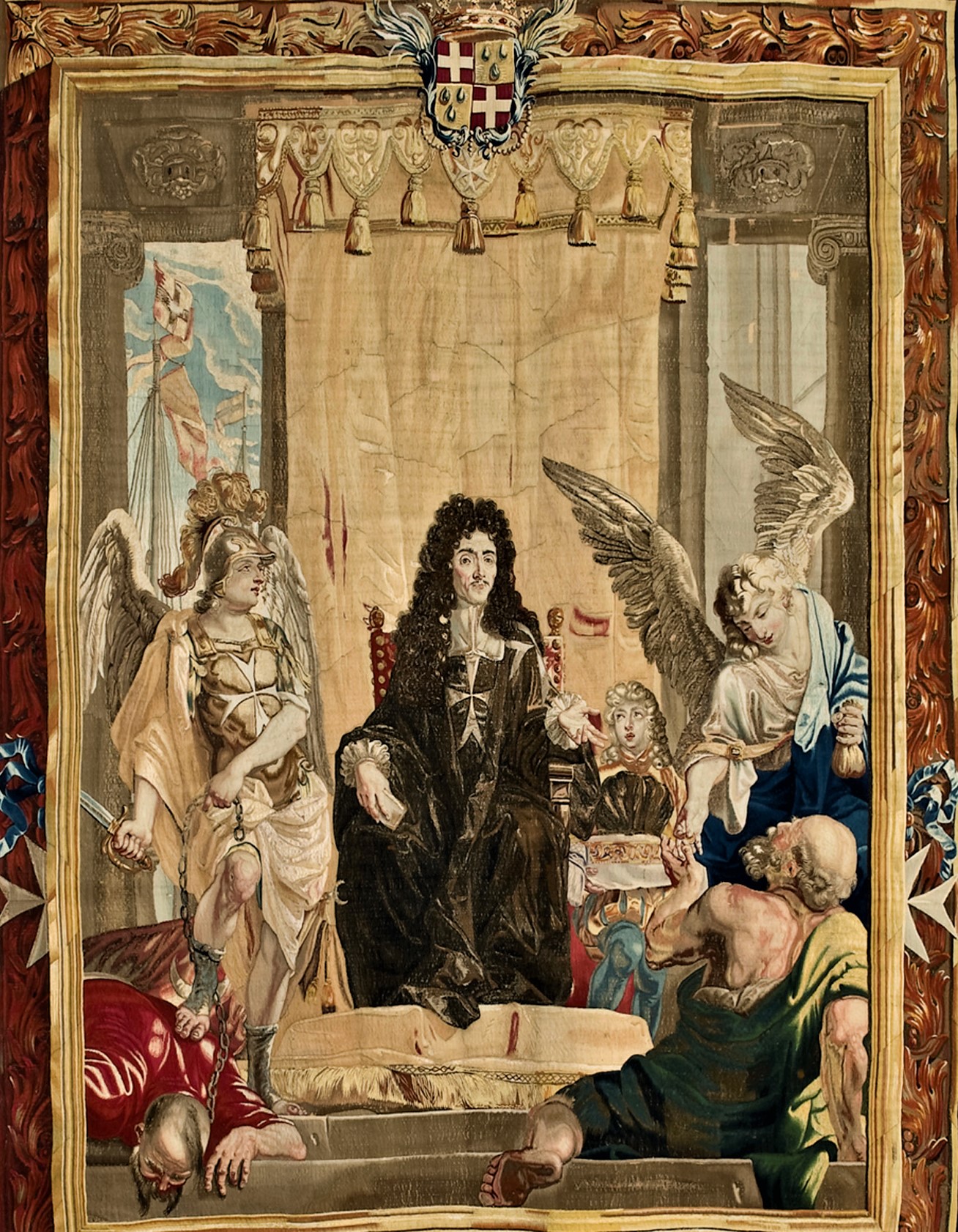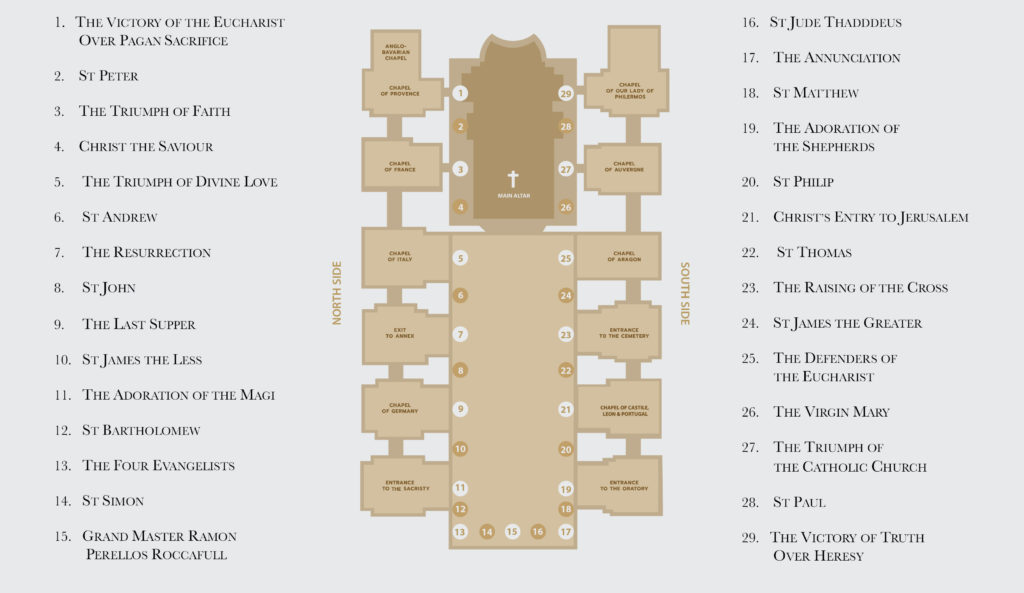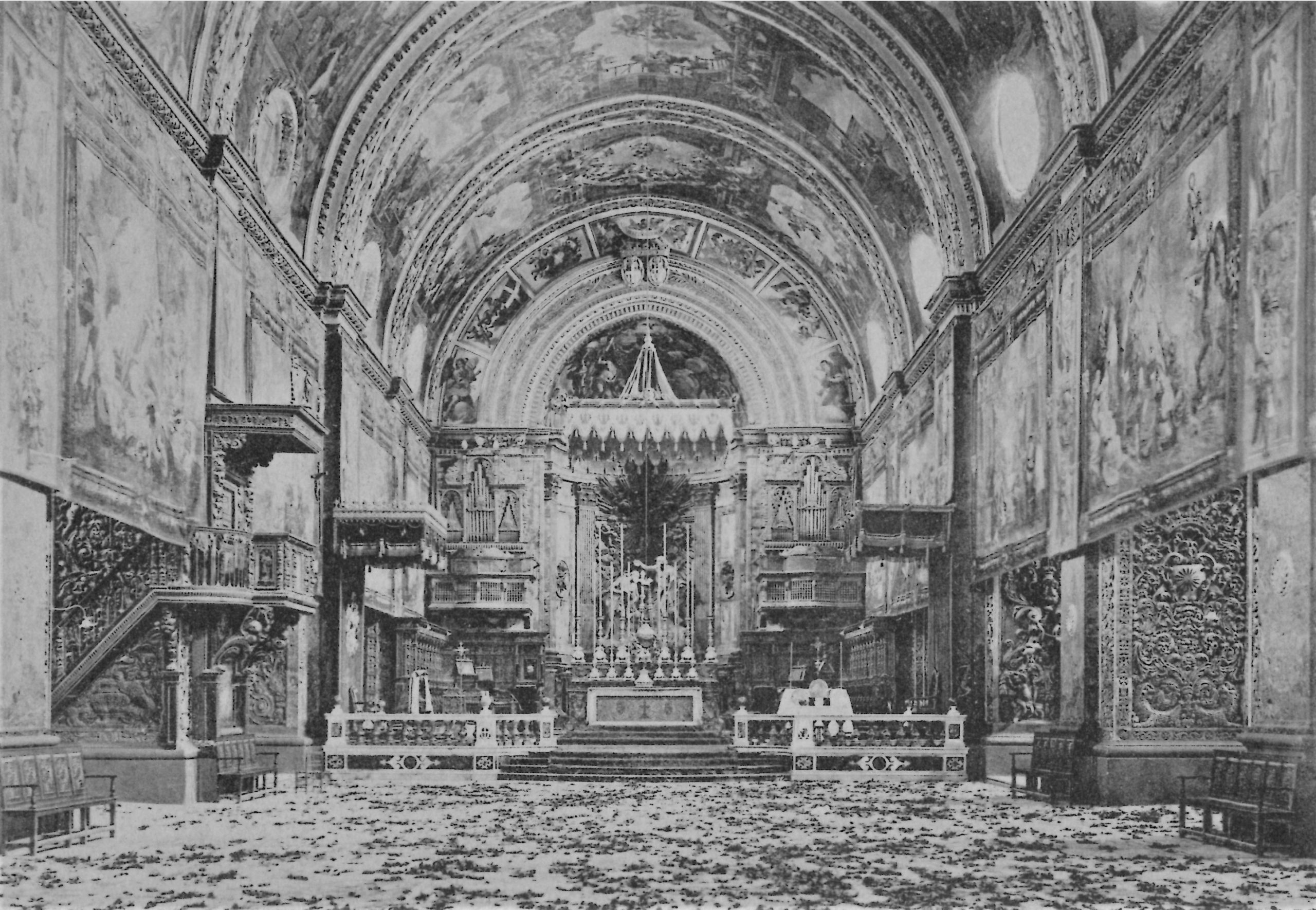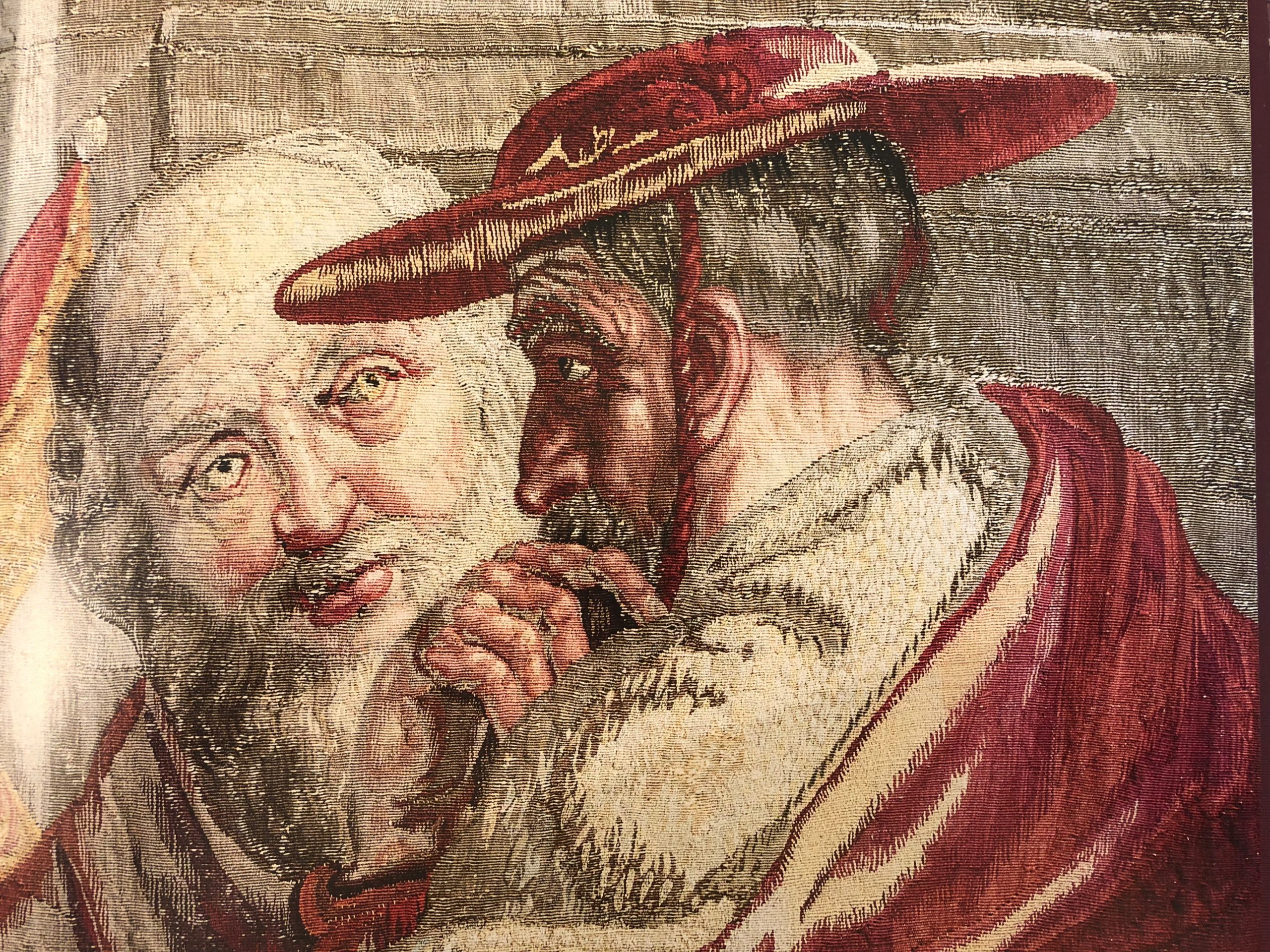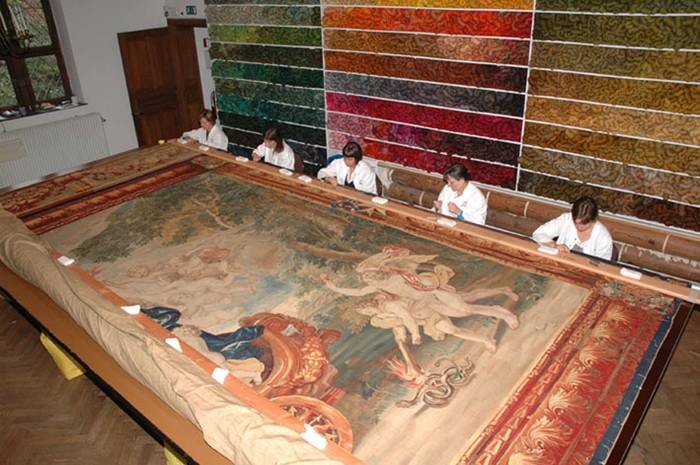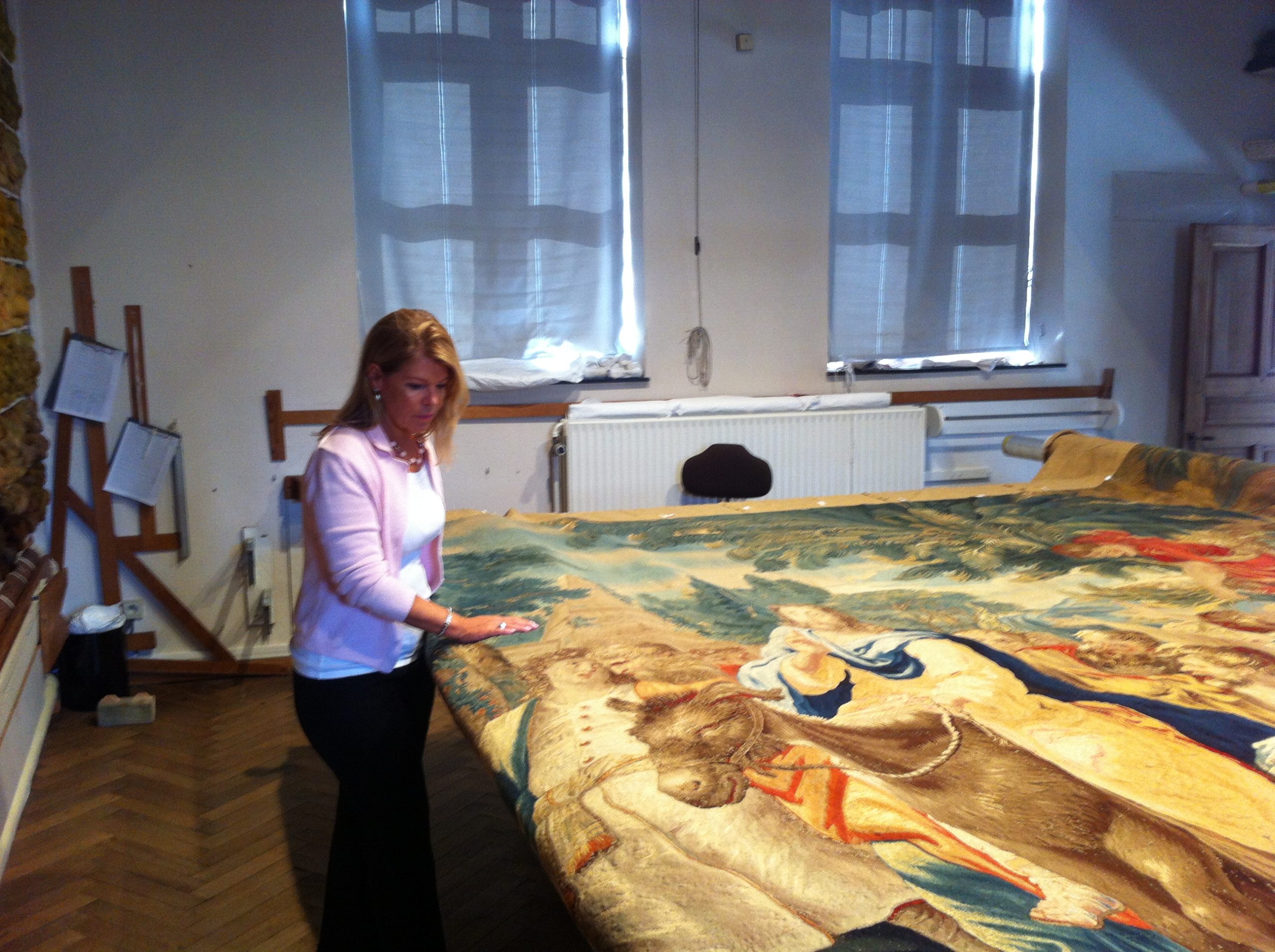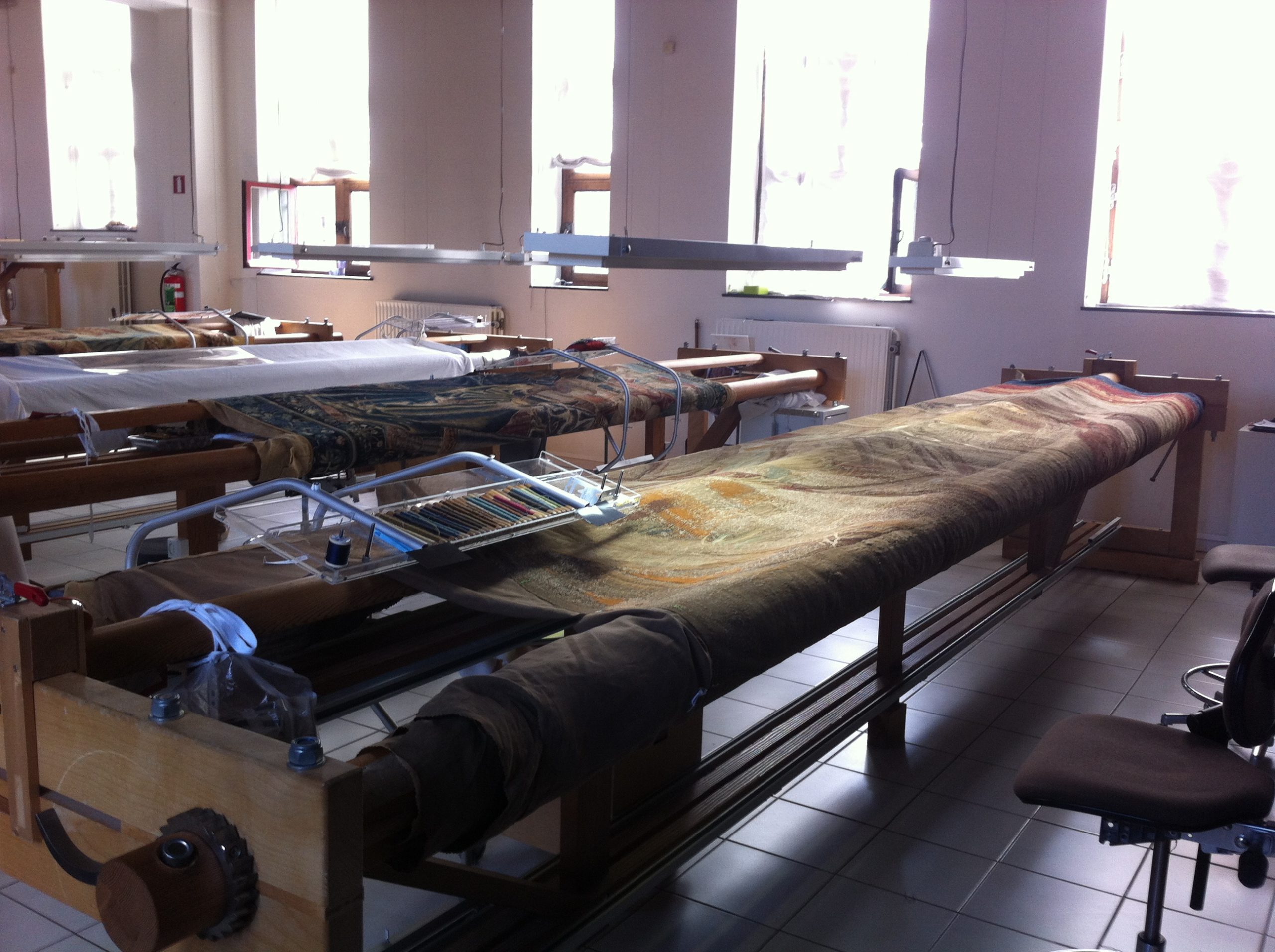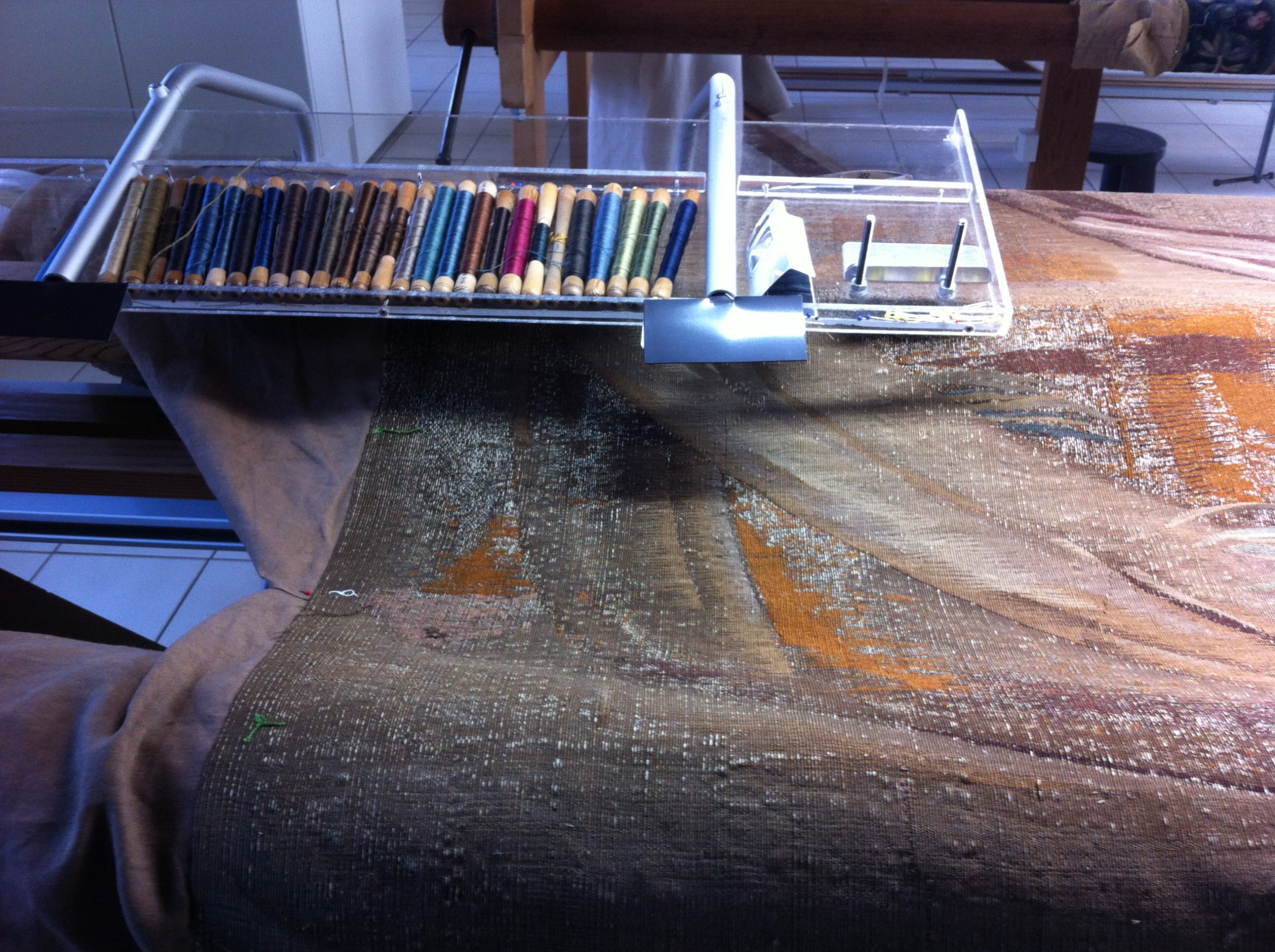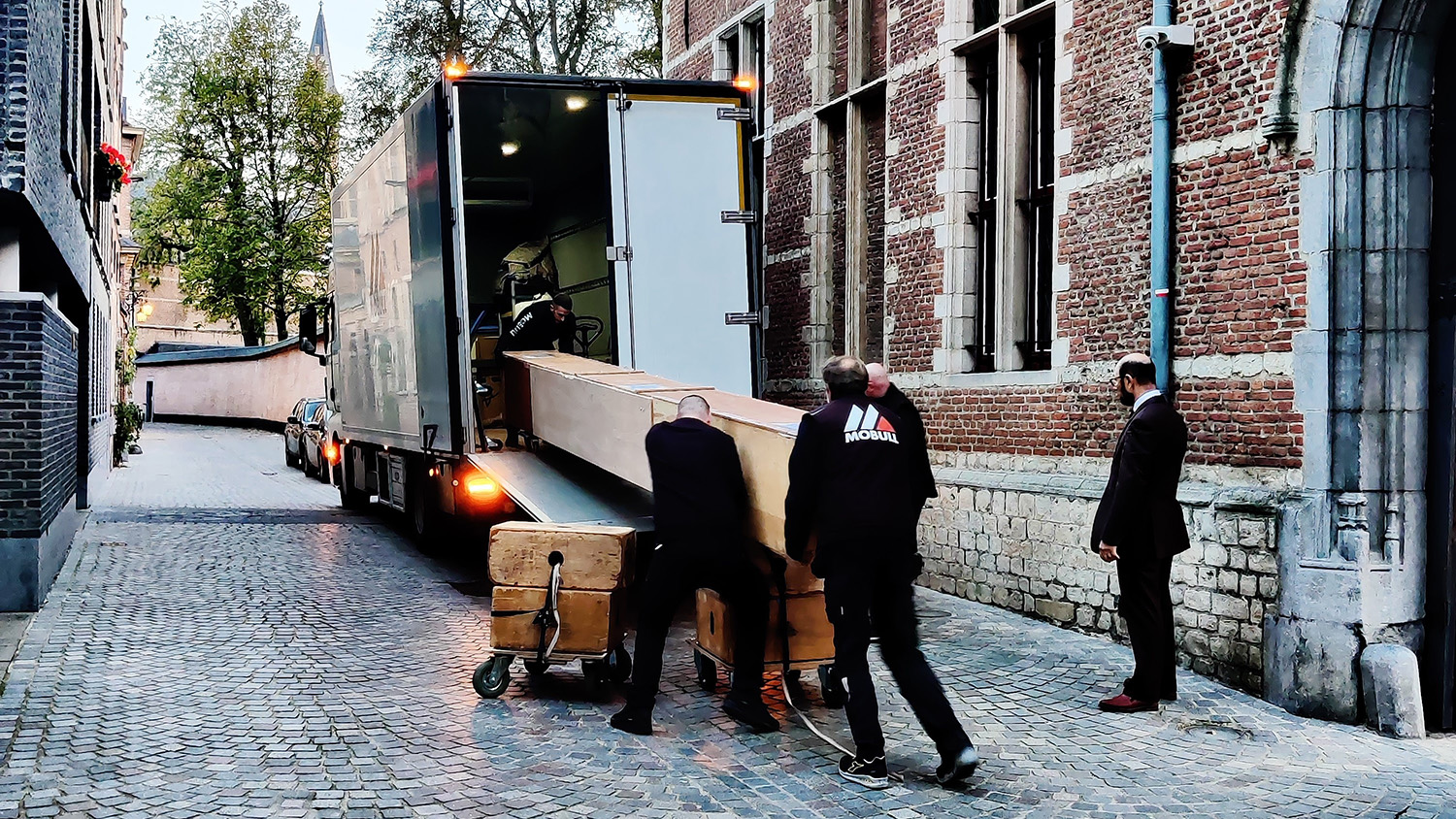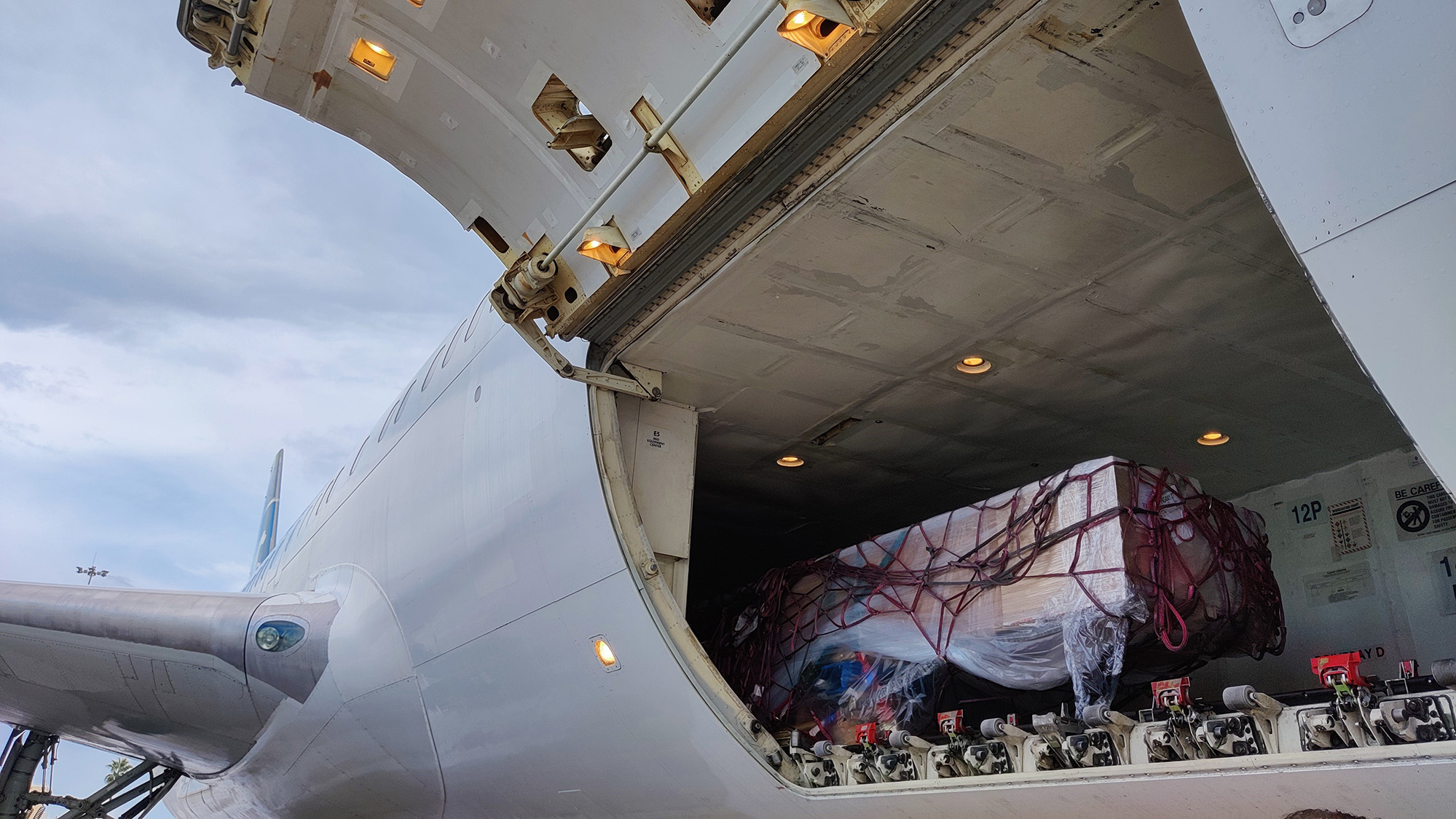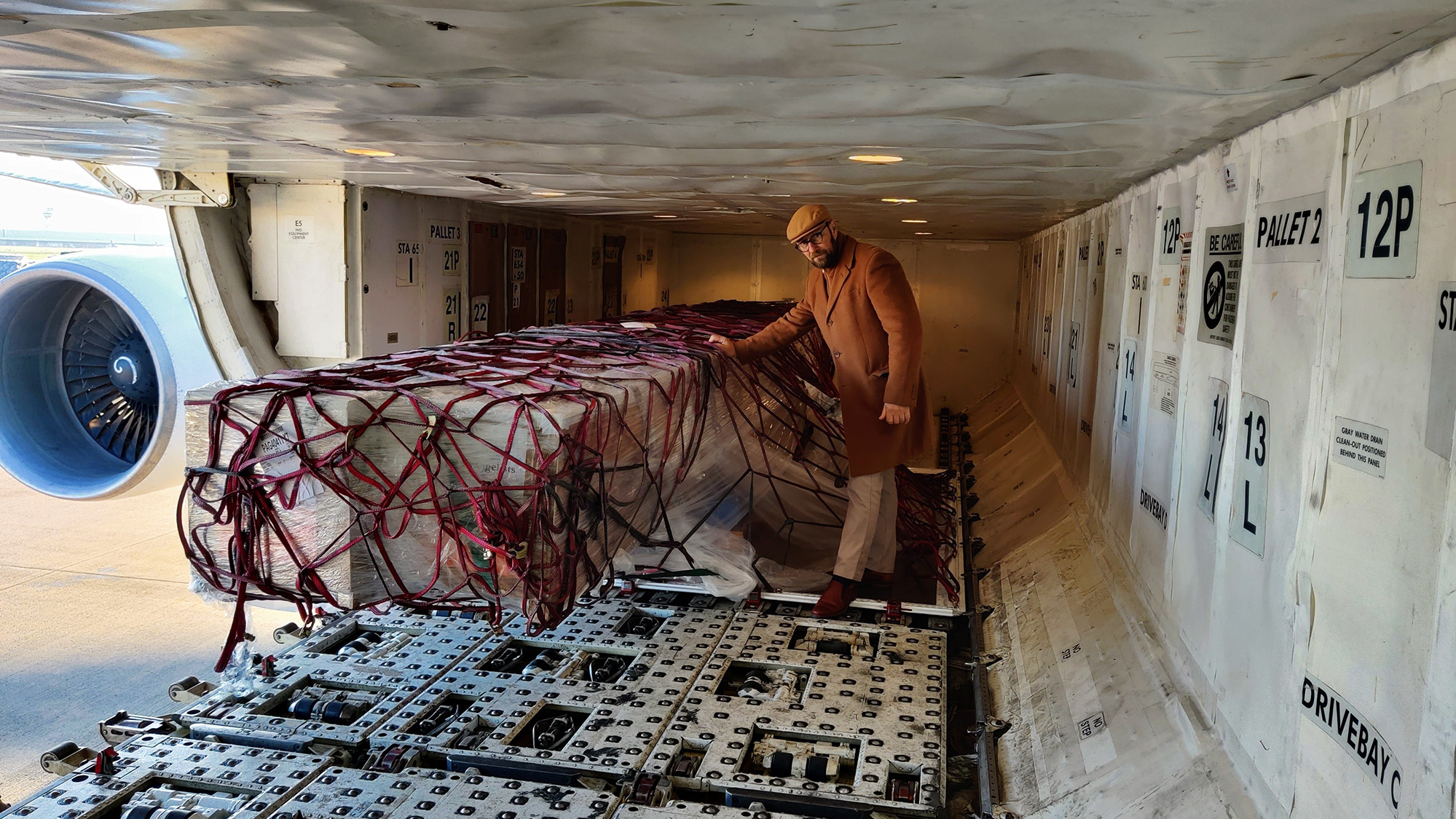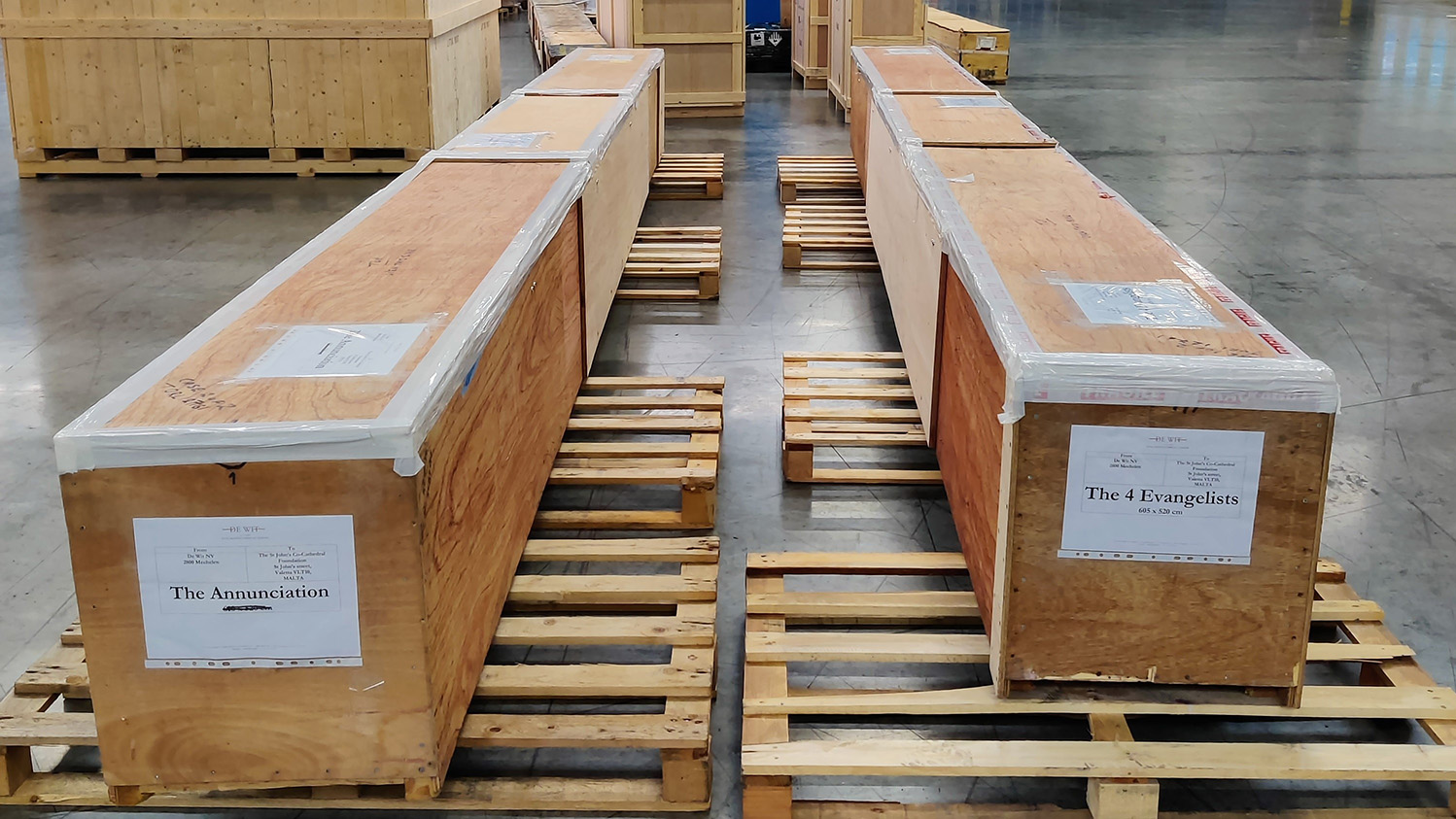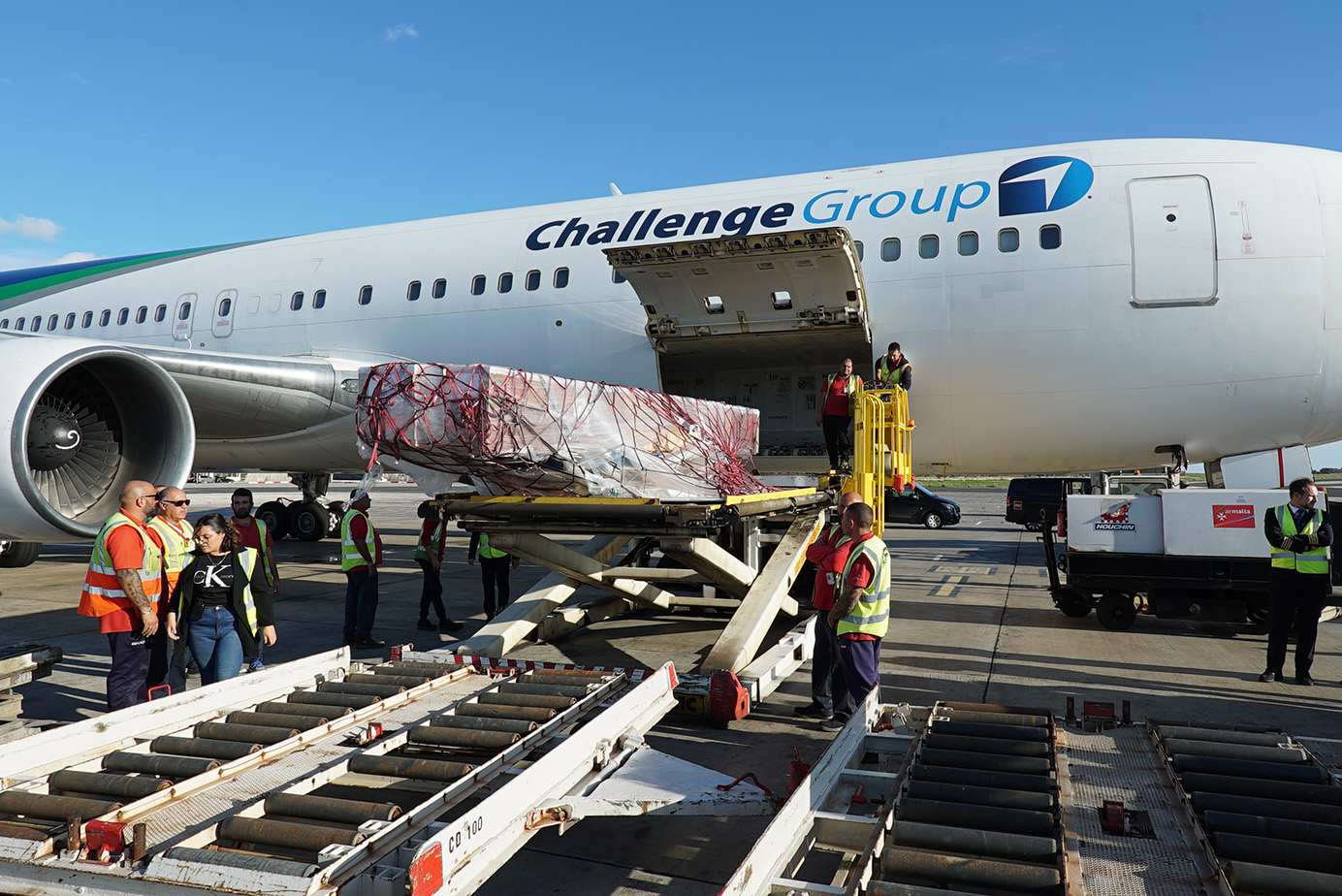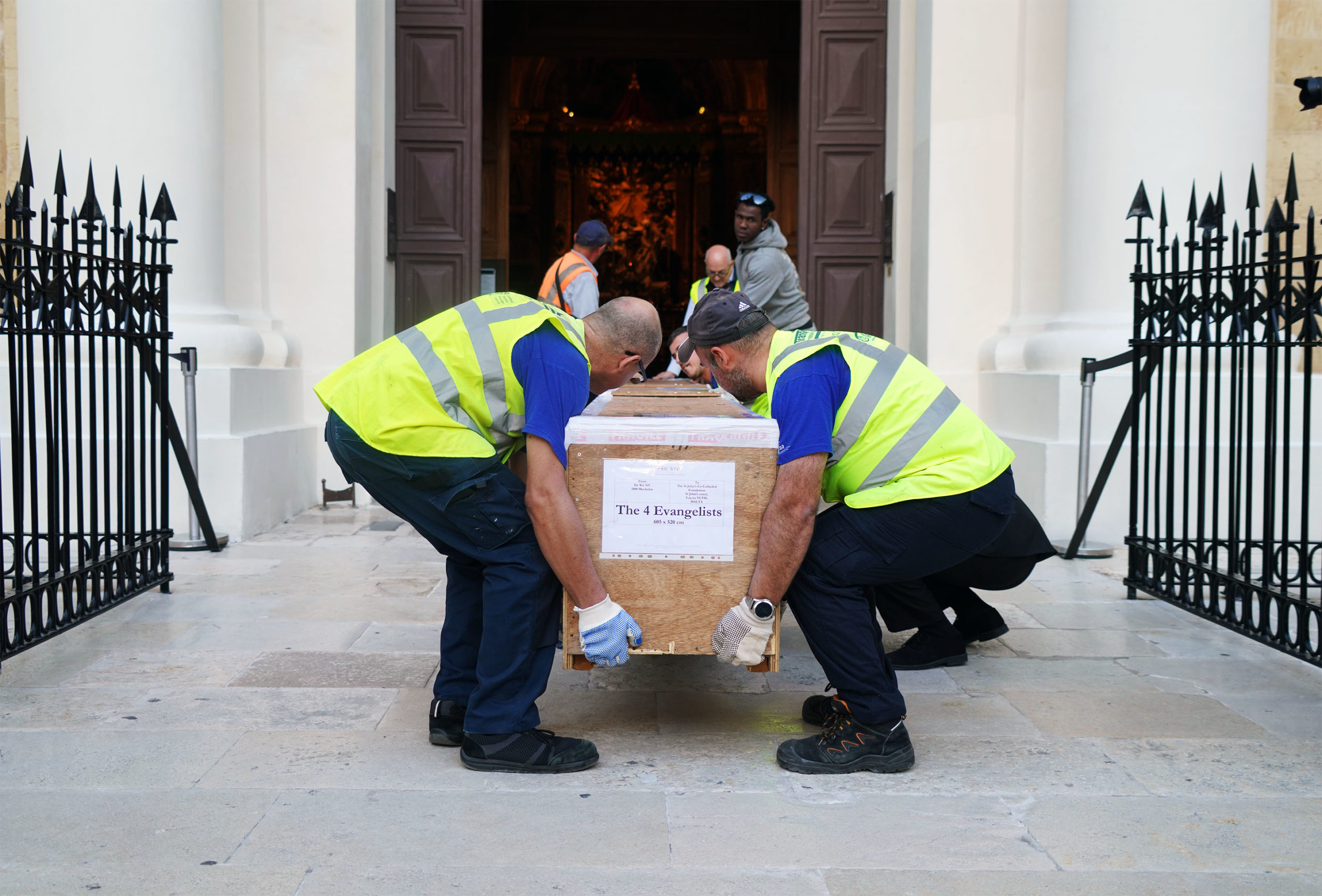A GIFT OF GLORY
Exhibiting the St John’s Co-Cathedral Tapestries
Introduction
When Ramon Perellos y Rocafull was elected Grand Master in 1697 he gifted the Conventual Church of the Order a set of tapestries that depict the Triumph of the Roman Catholic Church and episodes from the Life of Christ. Most of them are based on cartoons prepared by the renowned artist Peter Paul Rubens. They are amongst one of the largest and most exquisite sets of tapestries woven during the Baroque era.
Tapestries were one of the most expensive art forms which indicated status and wealth and were commissioned by nobles and rulers alike. They were used to insulate and embellish interiors. Tapestries in churches would have served as visual narratives to instruct the faithful.
The Triumph of the Roman Catholic Church was a particularly powerful theme at the time of the Counter-Reformation. The subject was widespread in art during the seventeenth century and Grand Master Perellos might have taken this opportunity to portray devotion to the Catholic faith and the exuberance of the Order.
THE COMMISSION
According to the Statutes of the Order, Grand Masters were obliged to give a gift known as Gioia, to their Conventual Church dedicated to St John the Baptist. The most noteworthy commission is the largest complete set in the world consisting of twenty-nine tapestries ordered from the weaver Judocus de Vos in 1698, in Brussels. They were executed between 1699 and 1701 confirmed by the inscription on the tapestry depicting Grand Master Perellos. The entire set journeyed from Brussels to France and later arrived in Malta in 1702.
Frà Don Ramon Perellos y Roccafull was invested in the Order at a relatively young age, where he joined the langue of Aragon and lived in Malta from 1653 until his passing on 10 January 1720. On 7 February 1697, three days after the passing of Grand Master Frà Adrien de Wignacourt, Perellos y Roccafull was elected as the sixty-fourth Grand Master of the Order.
The tapestries bear the Grand Master’s coat of arms, the Brussels city mark and the name of the weaver Judocus de Vos. The border which frames the scenes consists of laurel foliage, a symbol of peace and victory and a festoon of fruit and vegetables which symbolise the munificence of the reign of the Grand Master.
Seven tapestries depict scenes from the life of Christ:
- The Annunciation
- The Adoration of the Shepherds
- The Adoration of the Magi
- Christ’s Entry to Jerusalem
- The Last Supper
- The Raising of the Cross
- The Resurrection
Seven tapestries depict the Triumph of the Roman Catholic Church:
- The Defenders of the Eucharist
- Triumph of Divine Love
- Triumph of the Catholic Church
- Triumph of Faith
- The Victory of Truth over Heresy
- The Victory of the Eucharist over Pagan Sacrifice
- The Four Evangelists
Fourteen narrow tapestries depict:
- St Jude Thaddeus
- St Simon
- St Matthew
- St Bartholomew
- St Philip
- St James the Less
- St Thomas
- St John
- St James the Greater
- St Andrew
- The Virgin Mary
- Christ the Saviour
- St Paul
- St Peter
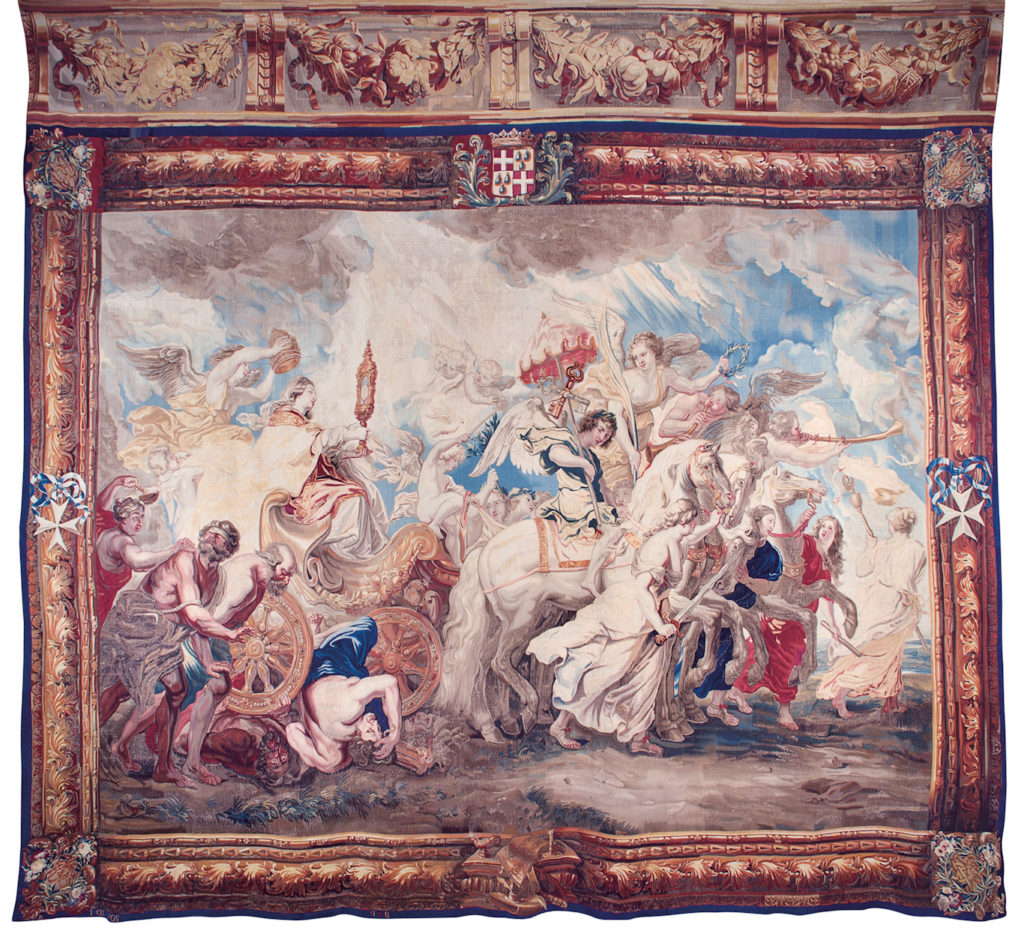
The Triumph of the Catholic Church, wool and silk, 1699-1701
PUBLIC DISPLAY
The full-length figure of the Grand Master Ramon Perellos y Roccafull was originally hung above the main entrance of the Church. His portrait is accompanied by the allegory of the Order who holds down a Moorish slave beneath her feet and the allegorical figure of Charity who distributes alms to the poor.
The fourteen large tapestries measure approximately 6.5 metres in width, seven of which represent scenes from the life of Christ whilst the other seven tapestries depict the Triumph of the Eucharist. Fourteen narrow tapestries were hung in front of the pilasters. The tapestries depict the apostles, Jesus Christ, and the Virgin Mary. They follow the northern tradition of erecting statues of the apostles on the pilasters of the nave. Consequently, they are woven in grisaille to resemble marble.
The tapestries were hung along the perimeter of the main nave from the feast of Corpus Christi until the feast of St John the Baptist. The tapestries were last hung in May 1990 during the Apostolic Visit of Pope Saint John Paul II.
RESTORATION
In 2006, the St John’s Co-Cathedral Foundation embarked on a sixteen-year project to restore the tapestries. The set was taken to Belgium and restored by the Royal Manufacturers De Wit Laboratories, the project was finalised in 2022.
Over time the tapestries that were woven from wool and pure silk sustained deterioration consisting of large gaps in the seams and loss of the delicate silk threads mainly caused from their exposure to UV radiation and the inevitable stress caused by gravity. Losses of silk wefts were particularly visible in the landscape and flesh tones. They had also collected dust and soot from the atmosphere which caused further deterioration.
The restoration treatment consisted of cleansing with a fine mist solution of solvents and water to remove dust and dirt. They were then placed on looms so the damage could be examined. Loose threads and open seams were carefully consolidated and repaired. The tapestries were fitted with new linings to support and prevent future deterioration.
>VISIT THE EXHIBITION
The restoration process at De Wit Manufacturers in Belgium to the last arrival of two tapestries in 2022.

